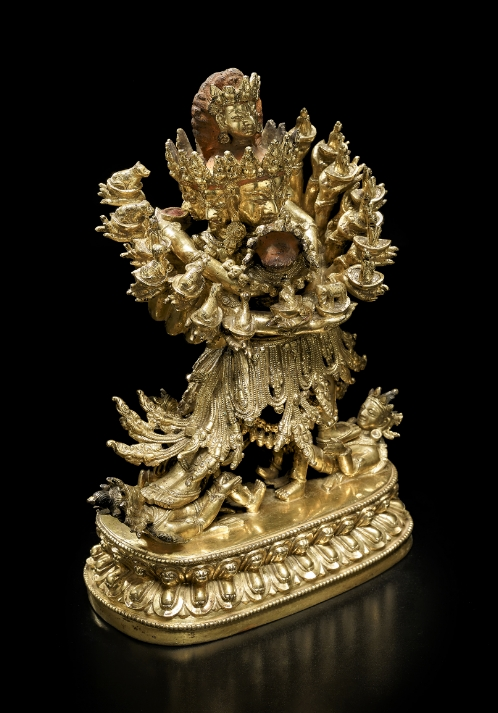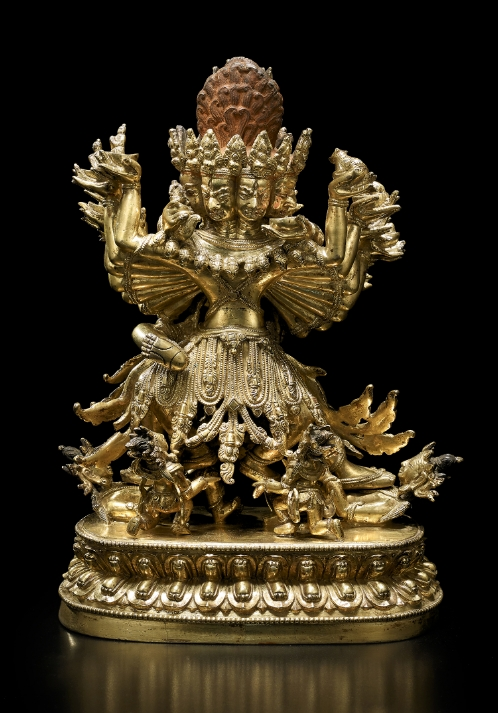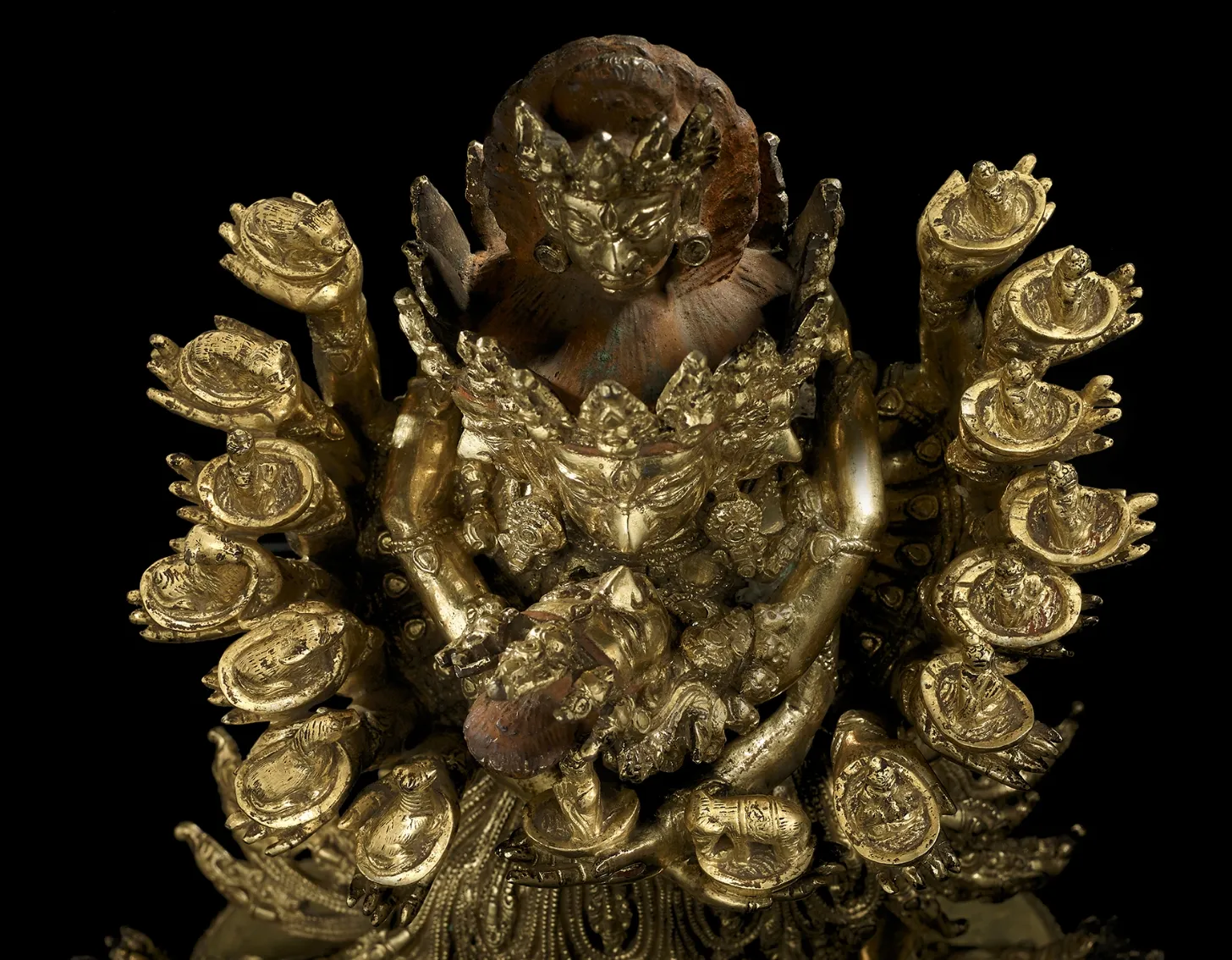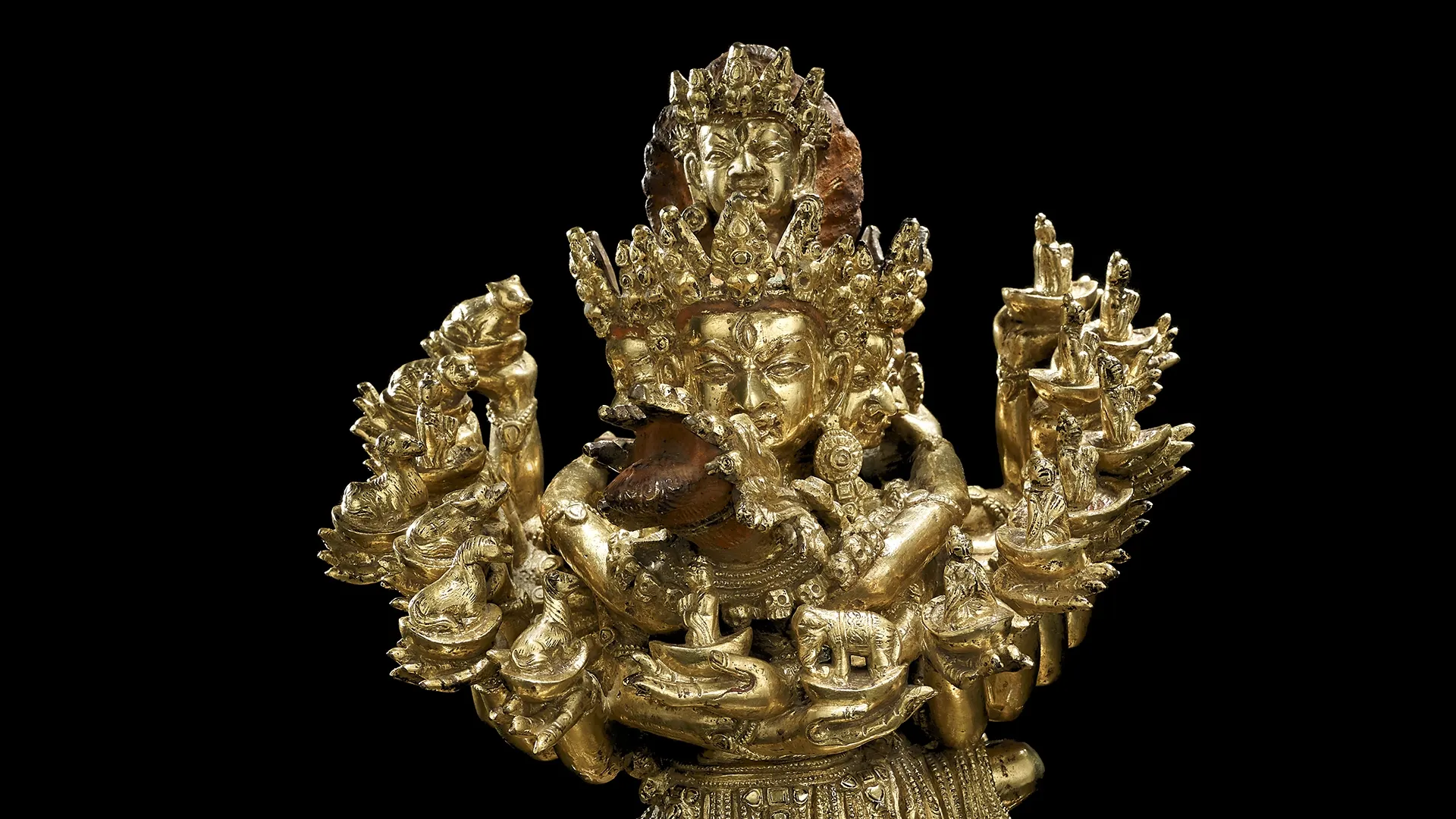Chinese imperial patronage of Tibetan Buddhist hierarchs continued throughout the Ming period.
During the rule of fifth Ming emperor Xuande (r.1425-35) significant numbers of Tibetan Buddhist monks and political representatives came to China.
Buddhist images were produced in the imperial workshops, and the Xuande emperor Zhu Zhanji took particular interest in the arts. The sculpture in cat. no. 25, while not bearing a Xuande inscription, nevertheless exhibits characteristics of Xuande period works, which is to say a somewhat baroque interpretation of the Yongle period style. The sculpture depicts Kapaladhara Hevajra, the same iconography observed previously in the c. 12th century sculpture from eastern India (cat. no. 10). The complex iconography of this figure, with six heads and twelve arms holding skullcups of offerings, and embracing a consort wearing a bone-ornament skirt, convenes in a sculpture of exceptional skill.


The visvavajra design on the baseplate is similar to works of the Yongle period. Xuande-period sculptures can generally be distinguished from similar, preceding Yongle examples by details such as the smaller beading above and below the lotus petals in the base and by differently shaped lotus petals.
Lotus bases are also shaped differently, with Yongle bases deeper at the back, and Xuande versions more oblong.

